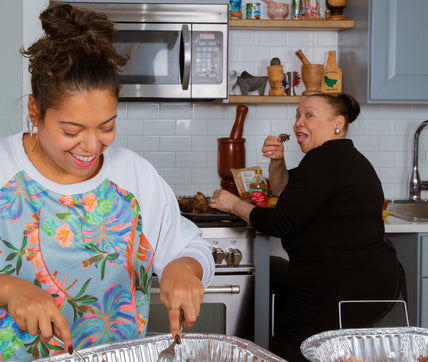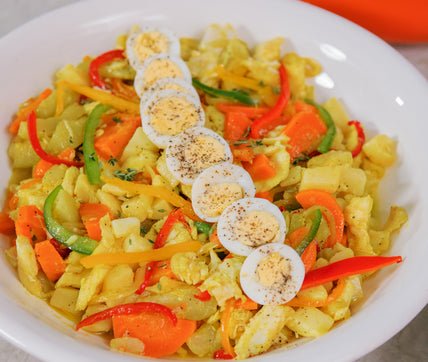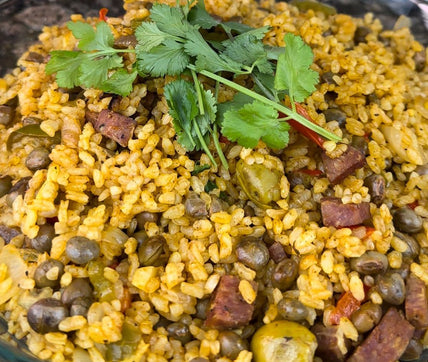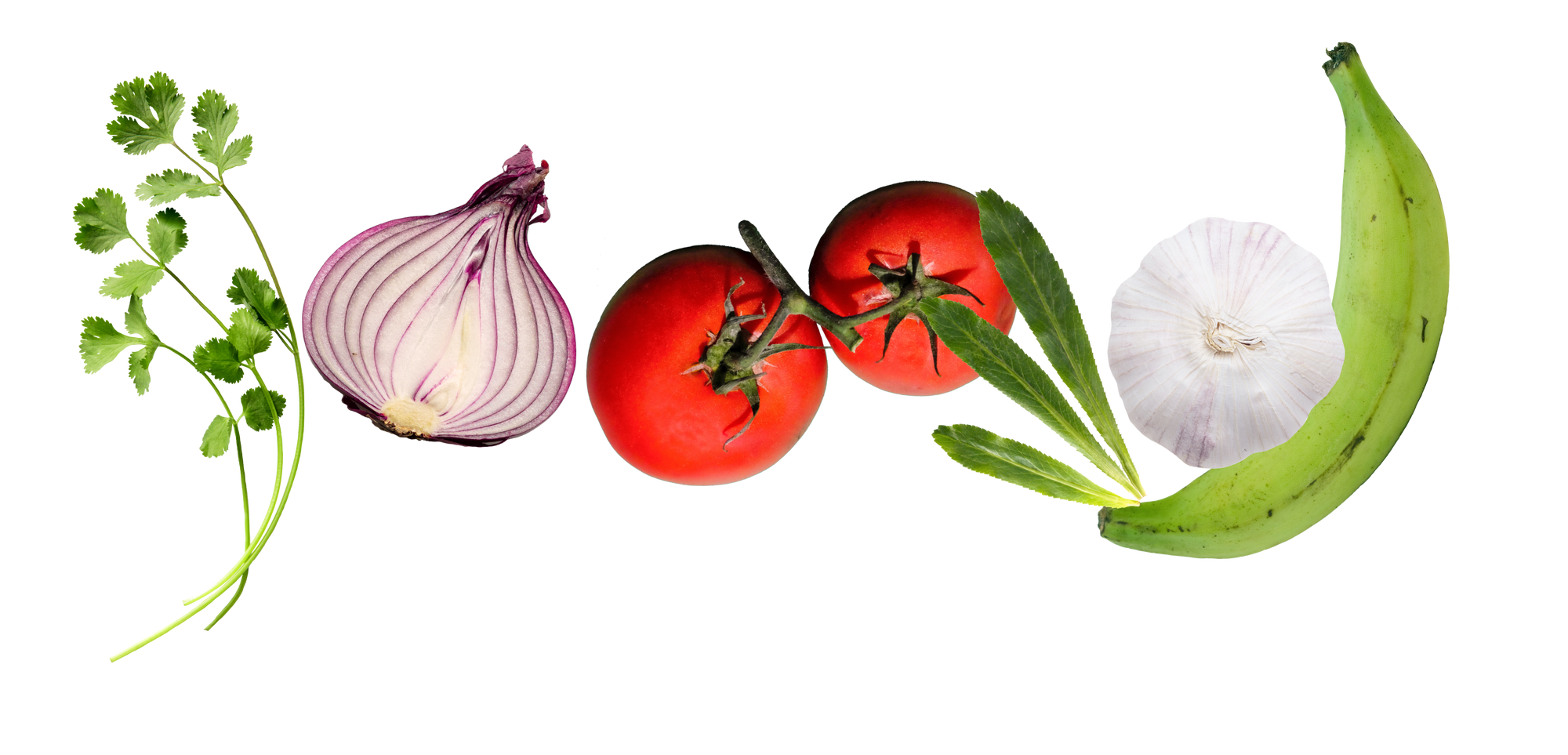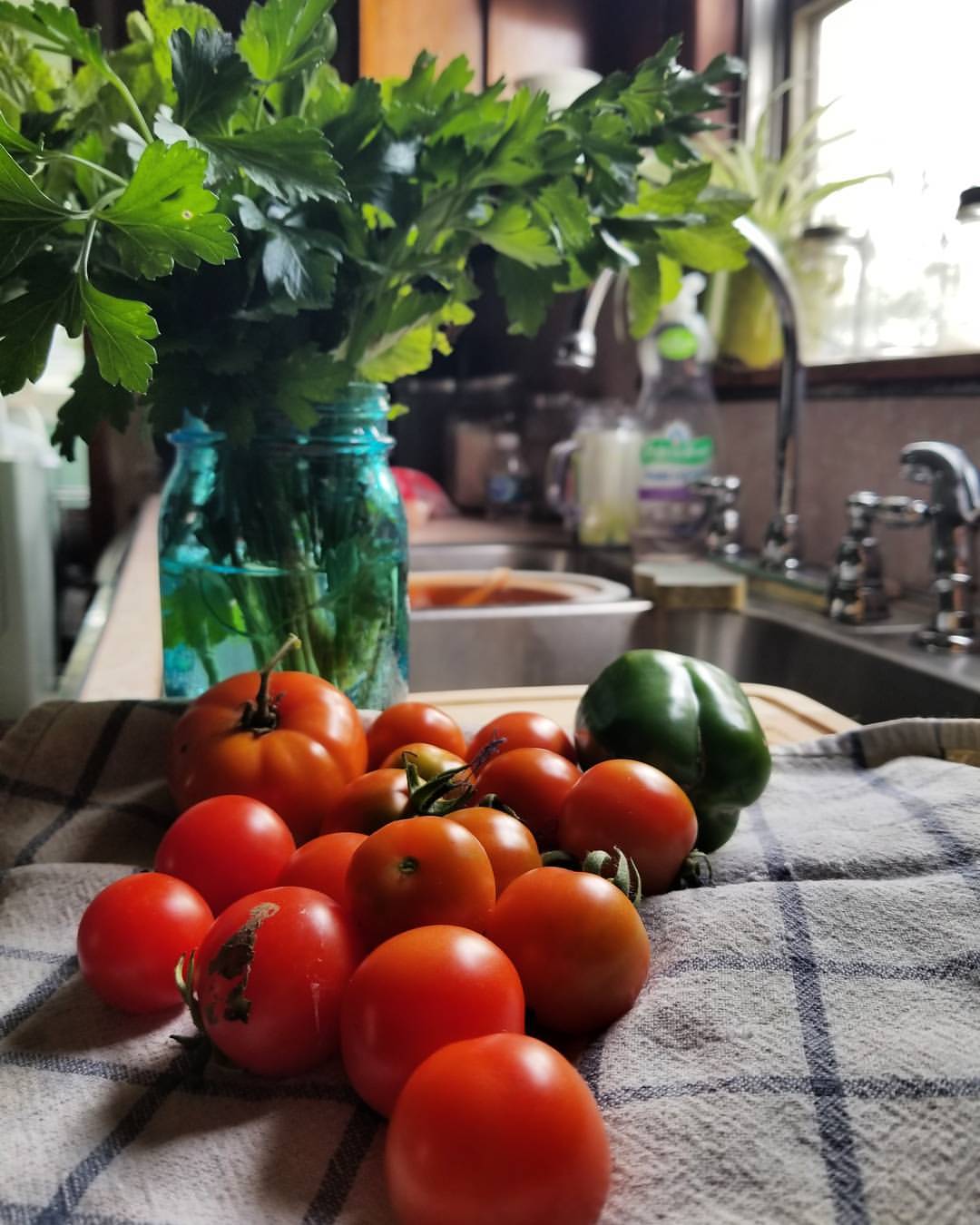
Our Familia Already Taught Us How to Eat Sustainably Now It’s Time to Tap In
Making the most out of our pantries and growing our foods--Latinos have always been about sustainability.
By Shayne Rodriguez Thompson | @writershayneaja
When I think about how I was fed during my childhood, I think about having arroz con habichuelas at least a few times a week and ensalada every night. I think about picking tomatoes from the backyard garden, margarine containers filled with sofrito and leftovers for the next day, the most delicious smells wafting through the kitchen as I did my homework while mom chopped vegetables beside me, and how there was always another chair for someone to pull up at the dinner table. My food memories are strong, and I can’t say how many times I’ve silently thanked my parents for teaching me how to cook and be comfortable in the kitchen.
Now that I’m a mom myself and living in this time of outrageous inflation, I often thank them for teaching me how to prepare the yummiest meals from our Puerto Rican culture and how to make the most of my pantry and freezer. I thank them for showing me how to grow my own food and, perhaps most importantly, teaching me how to take inexpensive and humble ingredients and stretch them to feed my entire family and anyone who might pop up at my door around dinner time.
Largely from poor and underdeveloped countries, hard-working immigrants living in or near expensive American cities, Latinos have always had to make it work. While our practices and methods have, of course, changed and evolved, our traditions are rooted in us, and when we need to get back to basics, they can help us to do so seamlessly and without feeling deprived.

We come from places where people have traditionally — and in many cases, still do — grow their own food. Our family members in Puerto Rico, Peru, the Dominican Republic, Mexico, and so on often picked vegetables and fruits right from their very own yards on a daily basis. We remember visiting our tías and tíos on the island, chasing down chickens for dinner. We ate a lot of rice or tortillas, with a bit of well-seasoned and sauced meat, and whatever veggies we grew at home or were on sale at the market. It may have been cheap, but we still remember those flavors and how they made our bellies feel safe and loved.
Whether we are taking a $3 bag of rice and stretching it to feed four or five people for a couple of weeks or cutting up a giant pork roast we got on special into small chunks to make carne frita for the whole family, making the most out of the least is ingrained in us. We don’t waste, we freeze or preserve it to enjoy later. We take those leftover boiled viandas — the yucca, the plátanos, the guineos, and the malanga — and drizzle them with a little more olive oil or butter and a sprinkle of adobo to have a comforting, filling, and nutrient-rich lunch the next day.
Many of us know how to eschew convenience items and pre-packaged foods in favor of the more affordable and eco-friendly homemade and hand-chopped options because, well, those things were foreign to our mamis and abuelas, so they never used them. Pre-chopped cebollas? ¡Fo! We can do it ourselves because mami made us sit by her side and learn how to because why waste the money?
To this day, some of my fondest memories are of me and my dad tending to the garden of our New Jersey home with the summer sun shining down on me. He grew tomatoes, peppers, herbs, and pepinos, which we used to make salads and sofrito. My dad also used those peppers to make his own pique. We ate from that plot all summer long.
Because of that, I’ve always grown a garden in some form, whether a pot of herbs on my porch or wide garden beds in my backyard. It’s something I’ve done for over 15 years, knowing it didn’t have to be too complicated. I’ve never had to over-think it like I see so many people do today because, well, he taught me that if I put seeds in the dirt and give them a bit of water, food would grow.
He knows because he had to do it growing up in Puerto Rico because sometimes, not having food you grew yourself meant you didn’t have food to eat at all. And honestly, it saves me so much money and has helped me introduce my own children to healthy foods and show them how tasty eating fresh, nutritious foods can be.

These skills are almost innate to us. It reminds me of how Puerto Ricans on the island banded together with their communities in the wake of Hurricane Maria to restore the land, so they could grow more of their own food and live more sustainably, just the way our ancestors did, and not have to rely solely on the government or corporations for survival. But, it doesn’t just have to be in times of crisis that we return to our roots. Regardless of how removed we are from our family’s countries of origin and the old ways of life, we can return to them — commit to them — at any time.
It’s in times like these — when eggs can cost as much as $8 a dozen and a loaf of bread is $6 — that I’m incredibly grateful that while some of our Latinx traditions and ways of life have gone by the wayside, the longer our families have been in the US, there are some things that just stick with us. We can use them and teach them to our children, knowing that we, too, can pass down the beautiful and practical methods that our mothers and fathers and abuelos and bisabuelos taught us.
So many sustainable practices are just a part of us. Even if we haven’t used them for a long time, we know them, and we have those memories to draw from. We are familiar with them, and when we need them, we can return to them again and again and hopefully commit to practicing them with regularity, not just to benefit our wallets but to help make our planet a safer and healthier place for everyone.
